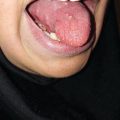, Ahmad Ameri1 and Mona Malekzadeh2
(1)
Department of Clinical Oncology, Imam Hossein Educational Hospital, Shahid Beheshti University of Medical Sciences (SBMU), Shahid Madani Street, Tehran, Iran
(2)
Department of Radiotherapy and Oncology, Shohadaye Tajrish Educational Hospital Shahid Beheshti University of Medical Sciences (SBMU), Tehran, Iran
Radiation-induced nausea and vomiting (RINV) is generally less frequent and less severe than the nausea and vomiting encountered in patients receiving chemotherapy. This problem is often underestimated and undertreated by radiation oncologists in clinical practice; however, it can be very distressing and may cause delay or even interruption of radiotherapy [1–3]. The incidence of RINV was studied in two prospective observational studies. The Italian Group for Antiemetic Research in Radiotherapy (IGARR) analyzed the incidence of RINV in 1020 patients receiving various kinds of radiation therapy without concurrent chemotherapy. Vomiting and nausea occurred in 11% and 27.1% of patients, respectively, and 27.9% of patients had both vomiting and nausea [1]. Nausea was twice as frequent as vomiting (27.1% vs. 11%) and lasted longer (median duration 10 vs. 3 days). The RINV incidence rates based on anatomical sites were 28% for breast, 39% for pelvis, 40.4% for head and neck, 48.8% for thorax, 40.4% for brain, and 71.4% for upper abdominal sites.
In a second study of 368 patients receiving radiation therapy again without concurrent chemotherapy, the overall incidence rates for nausea and vomiting were 39% and 7%, respectively, with 63% in abdominal or pelvic fields and by 48% in head/neck/brain fields [4].
20.1 Mechanism
The mechanism of RINV differs depending on radiation site. RINV is primarily due to a serotonin (5-hydroxytryptamine)-mediated pathway [5]. Damage to the enterochromaffin cells of the gastrointestinal mucosa by radiation leads to release of serotonin, which may initiate the emetogenic response through activation of serotonin receptors, visceral afferent fibers, and the chemoreceptor trigger zone (CTZ) in the brain stem [6].
If the gastrointestinal tract is included in the field of radiation, direct effects are likely with stimulation of afferent pathways in the upper gastrointestinal tract. RINV also can be mediated by activation of CTZ through release of humoral factors from tissue injury [7].
Increased intracranial pressure due to radiation-induced edema and inflammatory processes associated with radiation injury may also play a role in RINV [7].
20.2 Timing
Acute RINV is seen most frequently with radiation therapy. The latent period ranges from 30 min to 4 h in single-fraction study [6], and it generally begins 3–4 days after fractionated radiation therapy [1, 4, 8]. Delayed emesis is not observed with radiation therapy, unlike with chemotherapy, and anticipatory emesis is extremely rare with radiation therapy [6].
20.3 Risk Factors
The risk of developing RINV depends on several patient and treatment-related risk factors.
The most significant radiotherapy-related risk factors include the site (upper abdomen) and radiation field size (>400 cm) [1, 9]. Other factors like single and total dose, fractionation schedule, and treatment techniques are also important [6]. A single high dose and larger dose per fraction have a greater risk of inducing RINV [10].
Gagnon and Kuettel demonstrated diurnal variation in the gastrointestinal tract with more sensitivity to radiation-induced damage in the late morning than in the afternoon. This study was limited to prostate cancer patients [11].
Patient-related risk factors include age, gender, general health status, alcohol consumption, concurrent or previous chemotherapy, and previous experience of emesis [6]. The risk of RINV is higher in female patients, those younger than 50 years, and patients with a previous history of poorly controlled emesis. Conversely, the risk is decreased in those with a high alcohol intake [6].
It has been reported that the incidence of RINV may have some correlation with ABO blood group and it seems that patients with type A blood groups are the most vulnerable individuals to these side effects [12].
20.4 Symptoms
Patients with RINV experience lower well-being and quality of life, lower satisfaction with aspects of daily living, and more frequent fatigue, anxiety, and depression [4]. Prolonged vomiting can cause dehydration, electrolyte imbalances, and malnutrition.
20.5 Prevention and Management
Radiation therapy sites are classified base on their potential risk for developing RINV in ASCO and MASCC/ESMO guidelines (Table 20.1) [13, 14]. The National Comprehensive Cancer Network (NCCN) [15], Multinational Association for Supportive Care in Cancer (MASCC)/European Society for Medical Oncology (ESMO) [14], and American Society of Clinical Oncology (ASCO) [13] have released guidelines for the management of RINV based on risk category (Table 20.2).
Table 20.1
Risk classification for RINV
Definition | |
|---|---|
High risk | Total body irradiation and total nodal irradiation |
Moderate risk | Upper abdomen, half-body irradiation, upper-body irradiation |
Low risk | Cranium, craniospinal, head and neck, lower thorax region, pelvis |
Minimal risk | Breast, extremity |
Table 20.2
Recommendations for RINV
MASCC/ESMO | ASCO | NCCN | |
|---|---|---|---|
High risk | A 5-HT3 receptor antagonist + dexamethasone | A 5-HT3 receptor antagonist before each fraction and for at least 24 h after completion or radiotherapy + a 5-day course of dexamethasone during fraction 1–5
Stay updated, free articles. Join our Telegram channel
Full access? Get Clinical Tree
 Get Clinical Tree app for offline access
Get Clinical Tree app for offline access

|


